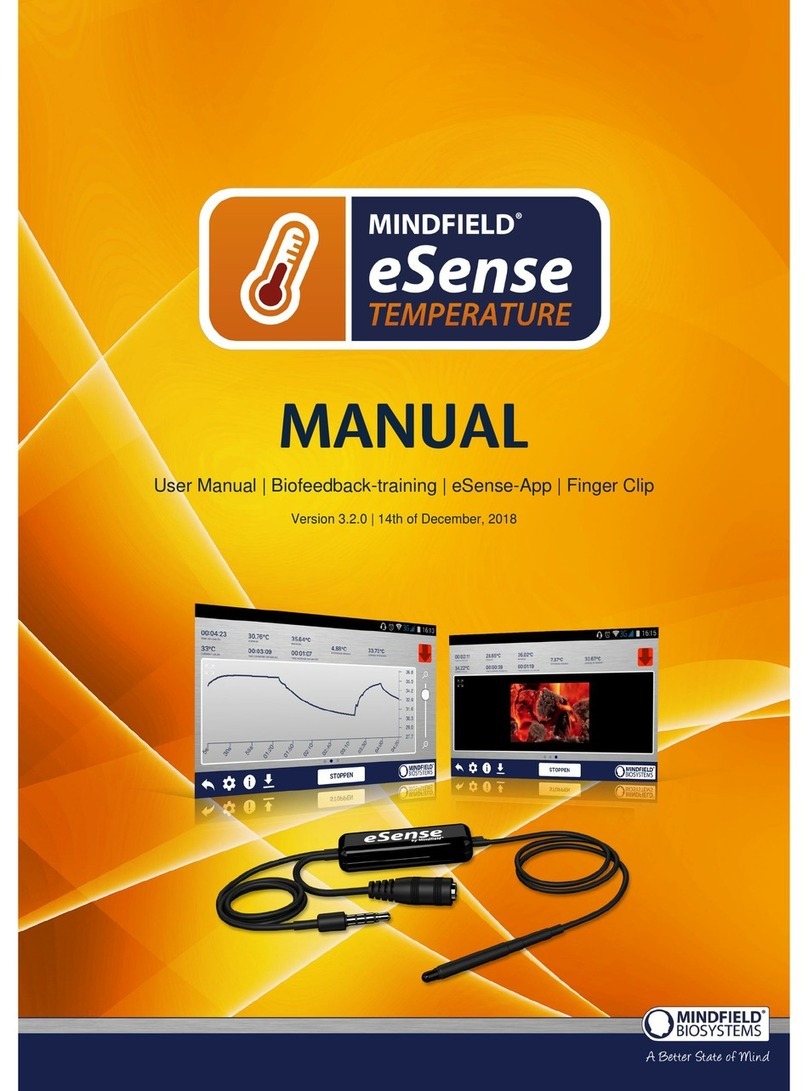7
You can send the measured values to your email address using the
respective function of the application.
Second stage (biofeedback training with the temperature feedback)
1. Before embarking upon the next session, try to be aware of your hand’s
temperature during everyday activities. Do your hands feel particularly warm
or particularly cold in certain situations? These observations can be very
helpful for the exercises to come.
2. The second stage consists of multiple sessions. These sessions should
always follow the following scheme. Start every session with a 2-3 minute
baseline measurement without watching the values in order to reach a steady
state.
3. Now you can start to train conscious relaxation, using the feedback signal.
Watch the temperature values while relaxing and try to find ways to bring them
up. It can be helpful to imagine yourself lying in the sun, relaxing in a sauna, or
putting your hands into warm water. You can also work with autosuggestion
techniques, telling yourself sentences like “My left hand feels warm…it feels
even warmer now…”. Feel free to experiment.
As with every activity, regular practice is the key to success. You should be able to
raise your skin temperature by several degrees, unless your baseline is already at
33-34 °C / 91-93 °F. The colder your hands are in the first place, the more potential
you have to raise their temperature. In principle, you can achieve more than 36 °C /
97 °F in your hands, a temperature normally reserved to your body core.
Third stage (transfer, relaxation without feedback)
1. Now you can check if a state of deepened relaxation, and the corresponding
rise in skin temperature, can already be achieved without feedback. After
measuring the baseline as usual, you should alternate between watching and
not watching the feedback, two minutes each way. The longer and more often
you can keep the temperature up without the feedback, the better your self-
control has already become.
2. Perform multiple sessions in third stage. When you can keep you skin
temperature up for a prolonged time and mainly without feedback, you have
successfully completed this stage.




























